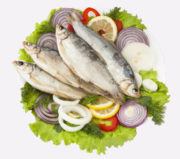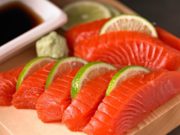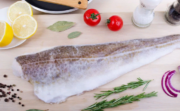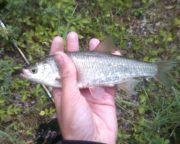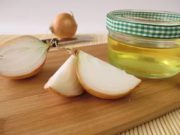How to salt sprat: dry salting and brine
Sprat is salted at home not because of savings, but solely in order to get tasty fish, and to know for sure that it is fresh fish. After all, most often sea fish is salted directly on the ships where it is caught, and from the moment of salting until it reaches our table, more than one month can pass. Of course, you can store salted sprat for quite a long time, and yet, freshly salted sprat has a milder taste, and the taste itself can be adjusted, rather than buying what is in the store’s assortment.
Sprat is a small fish, and it takes very little time to salt it. Let's look at two recipes for salting freshly frozen sprat.
Dry salting
Defrost the sprat and wash it. Place the fish in a colander and let it drain. Water won't hurt, but in this recipe we use dry salting.
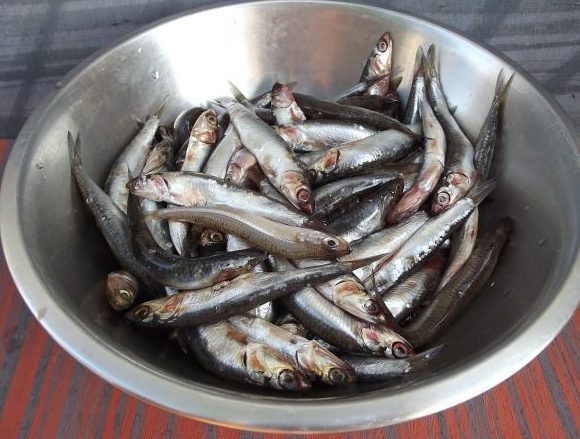
Place the fish in a deep basin or pan and cover it with coarse rock salt.
- For 1 kg of sprat you need 100 g. salt.
Mix the sprat thoroughly with salt, level it, and cover the sprat on top with a plate and put pressure on it.
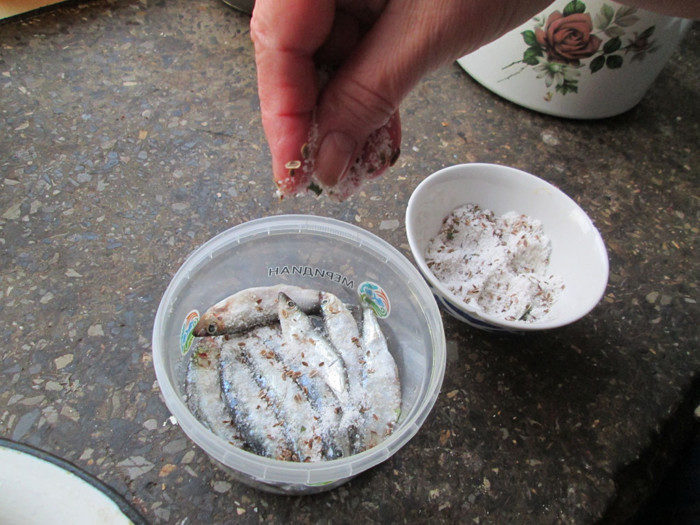
The sprat should stand at room temperature for the first hour, then it should be put in the refrigerator for 24 hours.
After the sprat has stood for a day in the refrigerator, it needs to be washed and placed in jars. In principle, the sprat is already ready to eat, but as an additive, you should cut the onion into rings and mix it with the sprat. Also, vinegar and aromatic vegetable oil should be added to each jar.
For 1 liter jar of sprat:
- 1 tbsp. l.vinegar;
- 2 tbsp. l. vegetable oil.
This sprat can be eaten not only with boiled potatoes, but also made into fish sandwiches.
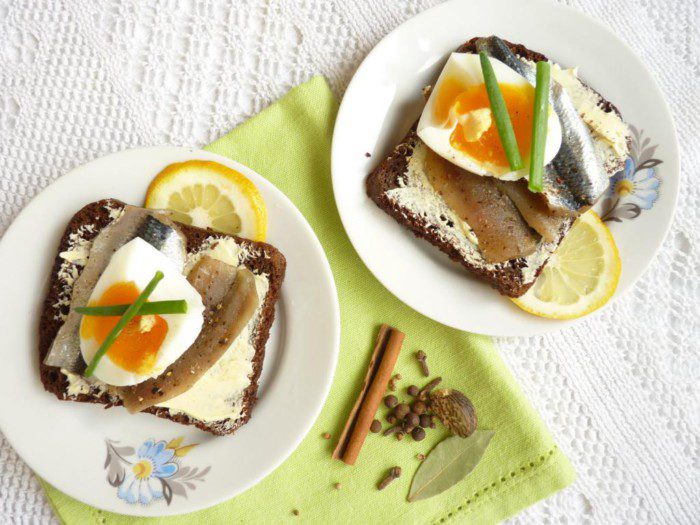
Sprat in brine
Oddly enough, problems often arise with preparing brine. It seems like they add spices, but the fish turns out not aromatic, but simply salty. The whole point is that you can’t put spices in cold brine. All recipes say that it is not necessary to boil the brine, otherwise you can kill the bacteria that are responsible for fermentation. All this is true, but this applies only to those brines that are prepared for fermenting products. When salting, if you do not boil the brine, the spices will not be able to open up and impart their aroma to the brine. You can grind them finely, but even in this case, the return will be very weak, because the process of salting sprat is very fast, and it will take much more time to “dissolve” the spices in cold water.
So, prepare the brine. For 1 kg of sprat you will need:
- 1 l. water;
- 3 tbsp. l. salt;
- 1 tbsp. l. Sahara;
- 2-3 bay leaves;
- 10 black peppercorns;
- 5 pieces. carnations.
This is a standard set, and it can be changed or supplemented with cumin, mustard seeds, anise, and much more.
Boil water in a saucepan and add spices, salt and sugar. Cover the brine with a lid and remove the pan from the stove. The brine should steep thoroughly and at the same time cool down.
Place the sprat in a container in which it will be salted. Buckets with food-grade plastic lids are well suited for this. They are compact and convenient for storing food.

As soon as the brine has cooled to room temperature, pour it over the sprat, close the container with a lid, and you can immediately put the sprat in the refrigerator.
The time for salting sprat in brine is about 12 hours, but it can be stored there for up to 3 months.Of course, you shouldn’t keep the sprat in brine for so long, and it’s better to salt it a little at a time, as needed.
Watch the video on how to quickly pickle sprat:




